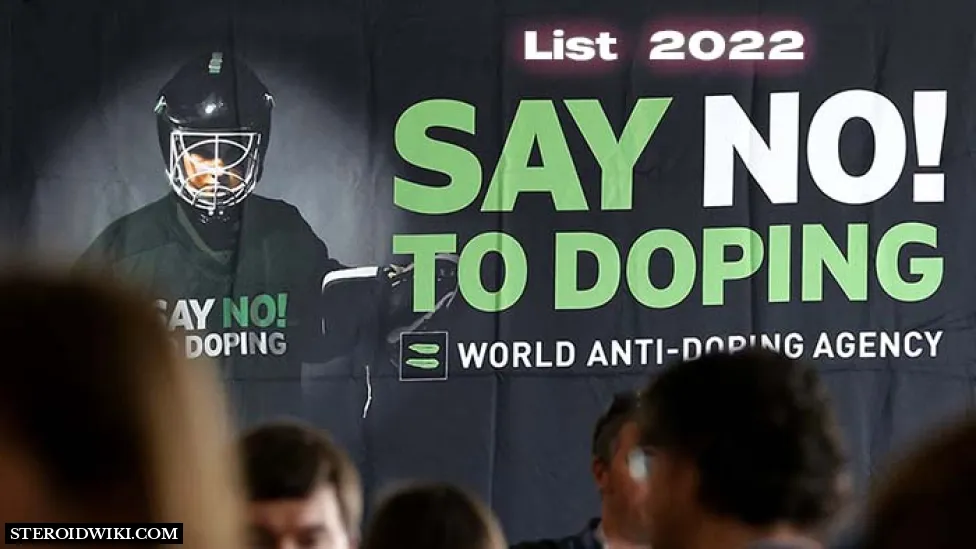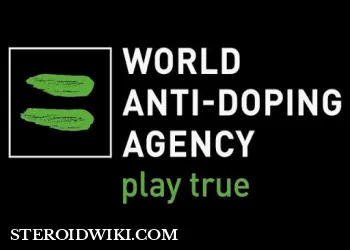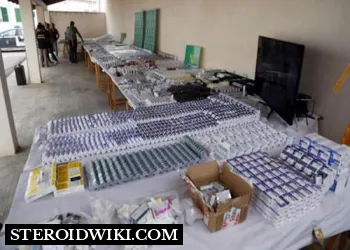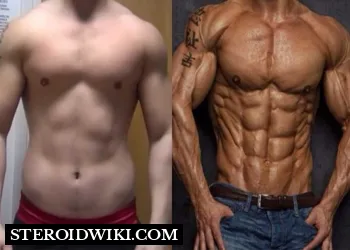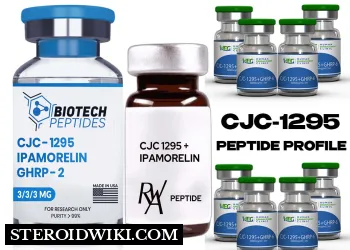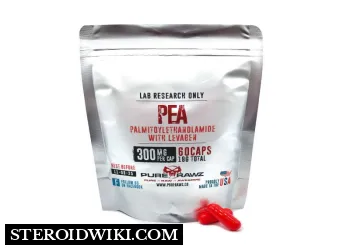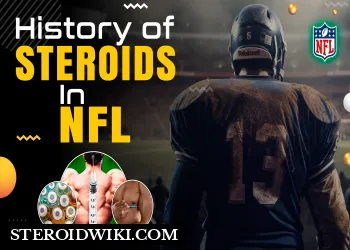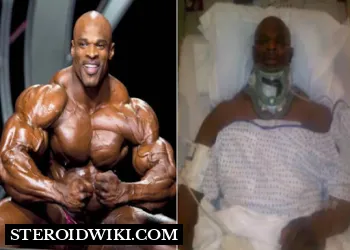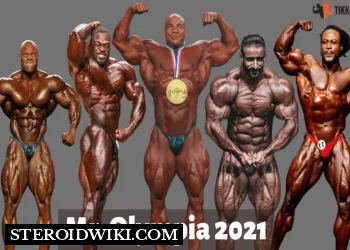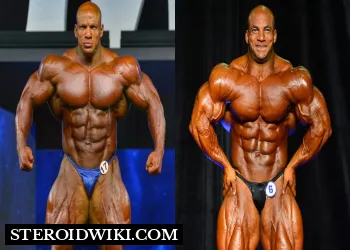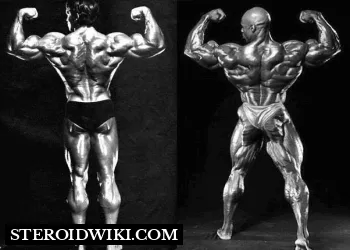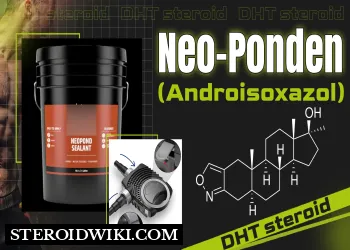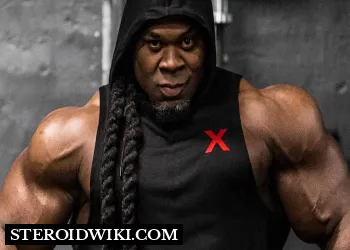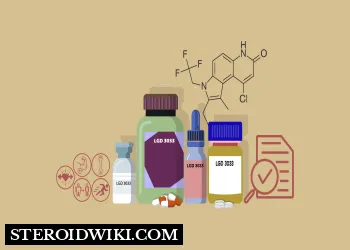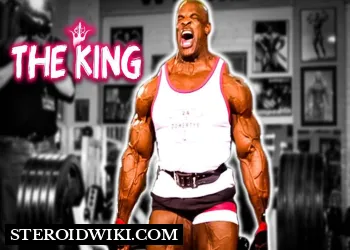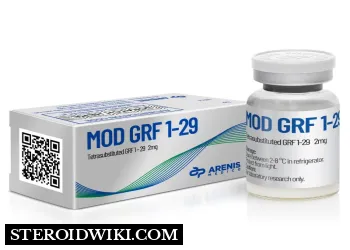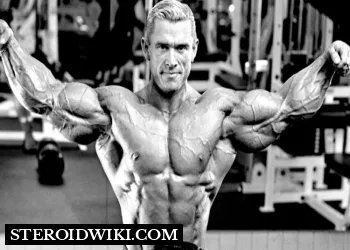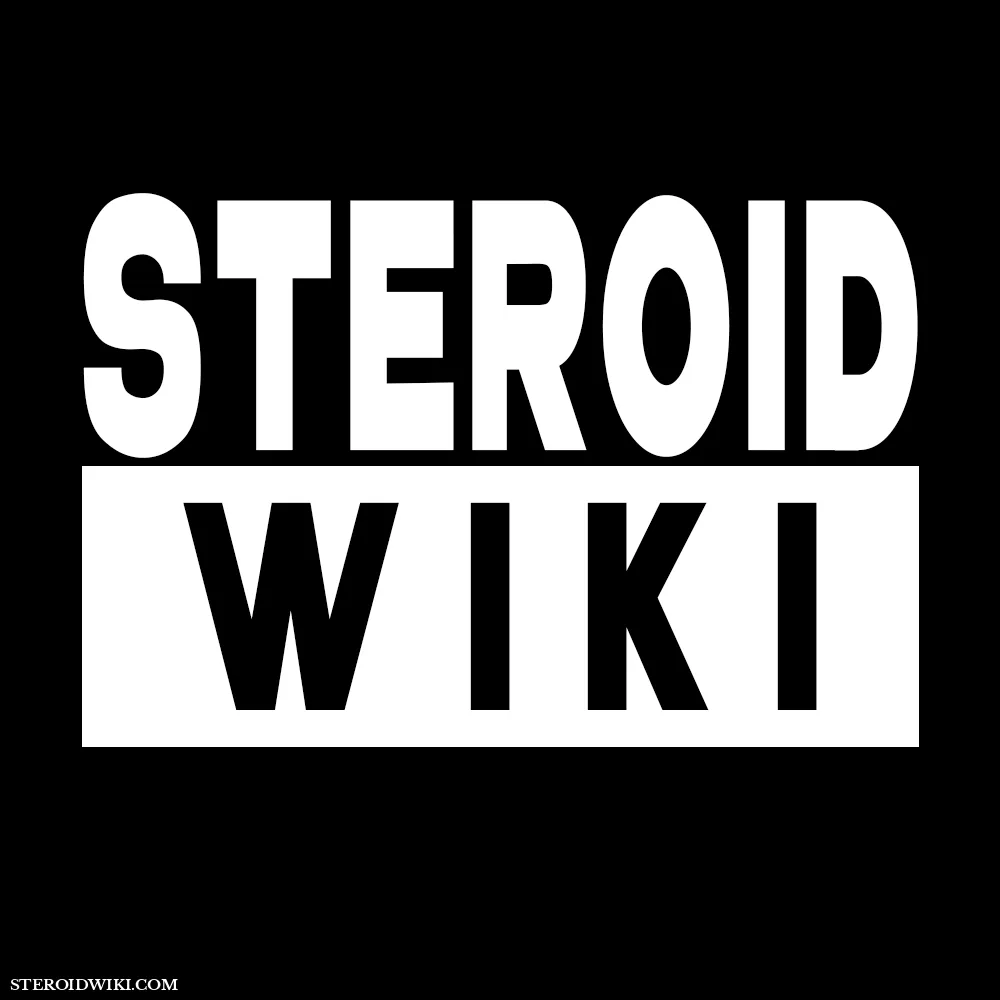WADA Anti-Doping List 2022
Table of Contents
World Anti Doping Agency recently issued its International Standard Prohibited List for the year 2022. The prohibitory list is a mandatory standard for athletes to follow during and out of the competition. This prohibited list is divided into two parts.
1. Prohibited at all times
All prohibited substances in this class are Specified Substances.
Any pharmacological substance which is not addressed by any of the subsequent sections of the List and with no current approval by any governmental regulatory health authority for human therapeutic use (e.g. drugs under pre-clinical or clinical development or discontinued, designer drugs, substances approved only for veterinary use) is prohibited at all times.
This class covers many different substances including but not limited to BPC-157
1.1 Anabolic Agents
PROHIBITED AT ALL TIMES (IN- AND OUT-OF-COMPETITION)
All prohibited substances in this class are non-Specified Substances.
Anabolic agents are prohibited.
ANABOLIC ANDROGENIC STEROIDS (AAS)
When administered exogenously, including but not limited to:
|
|
Other Anabolic Agents
Including, but not limited to:
Clenbuterol, osilodrostat, selective androgen receptor modulators [SARMs, e.g. andarine, enobosarm (ostarine), LGD-4033 (ligandrol) and RAD140], zeranol and zilpaterol.
1.2 PEPTIDE HORMONEs, GROWTH FACTORS, RELATED SUBSTANCES, AND MIMETICS
PROHIBITED AT ALL TIMES (IN- AND OUT-OF-COMPETITION)
All prohibited substances in this class are non-Specified Substances. The following substances, and other substances with similar chemical structure or similar biological effect(s), are prohibited.
1. ERYTHROPOIETINS (EPO) AND AGENTS AFFECTING ERYTHROPOIESIS
Including, but not limited to:
- Erythropoietin receptor agonists, e.g. darbepoetins (dEPO); erythropoietins (EPO); EPO-based constructs [e.g. EPO-Fc, methoxy polyethylene glycol-epoetin beta (CERA)]; EPO-mimetic agents and their constructs (e.g. CNTO-530, peginesatide).
- Hypoxia-inducible factor (HIF) activating agents, e.g. cobalt; daprodustat (GSK1278863); IOX2; molidustat (BAY 85-3934); roxadustat (FG-4592); vadadustat (AKB-6548); xenon.
- GATA inhibitors, e.g. K-11706.
- Transforming growth factor beta (TGF-β) signalling inhibitors, e.g. luspatercept; sotatercept.
- Innate repair receptor agonists, e.g. asialo EPO; carbamylated EPO (CEPO).
2. PEPTIDE HORMONES AND THEIR RELEASING FACTORS
2.1 Chorionic gonadotrophin (CG) and luteinizing hormone (LH) and their releasing factors in males, e.g. buserelin, deslorelin, gonadorelin, goserelin, leuprorelin, nafarelin and triptorelin
2.2 Corticotrophins and their releasing factors, e.g. corticorelin
2.3 Growth hormone (GH), its analogues and fragments including, but not limited to:
- growth hormone analogues, e.g. lonapegsomatropin, somapacitan and somatrogon
- growth hormone fragments, e.g. AOD-9604 and hGH 176-191
2.4 Growth hormone releasing factors, including, but not limited to:
- growth hormone-releasing hormone (GHRH) and its analogues (e.g. CJC-1293, CJC-1295, sermorelin and tesamorelin)
- growth hormone secretagogues (GHS) and its mimetics [e.g. lenomorelin (ghrelin), anamorelin, ipamorelin, macimorelin and tabimorelin]
- GH-releasing peptides (GHRPs) [e.g. alexamorelin, GHRP-1, GHRP-2 (pralmorelin), GHRP-3, GHRP-4, GHRP-5, GHRP-6, and examorelin (hexarelin)]
3. GROWTH FACTORS AND GROWTH FACTOR MODULATORS
PROHIBITED AT ALL TIMES (IN- AND OUT-OF-COMPETITION)
Including, but not limited to:
- Fibroblast growth factors (FGFs)
- Hepatocyte growth factor (HGF)
- Insulin-like growth factor 1 (IGF-1) and its analogues
- Mechano growth factors (MGFs)
- Platelet-derived growth factor (PDGF)
- Thymosin-β4 and its derivatives e.g. TB-500
- Vascular endothelial growth factor (VEGF)
- and other growth factors or growth factor modulators affecting muscle, tendon or ligament protein synthesis/degradation, vascularisation, energy utilization, regenerative capacity or fibre type switching.
1.3 BETA-2 AGONISTS
PROHIBITED AT ALL TIMES (IN- AND OUT-OF-COMPETITION)
All prohibited substances in this class are Specified Substances. All selective and non-selective beta-2 agonists, including all optical isomers, are prohibited.
Including, but not limited to:
- Arformoterol
- Fenoterol
- Formoterol
- Higenamine
- Indacaterol
- Levosalbutamol Olodaterol
- Procaterol
- Reproterol
- Salbutamol
- Salmeterol
- Terbutaline
- Tretoquinol (trimetoquinol)
- Tulobuterol
- Vilanterol
EXCEPTIONS
- Inhaled salbutamol: maximum 1600 micrograms over 24 hours in divided doses not to exceed 600 micrograms over 8 hours starting from any dose;
- Inhaled formoterol: maximum delivered dose of 54 micrograms over 24 hours;
- Inhaled salmeterol: maximum 200 micrograms over 24 hours;
- Inhaled vilanterol: maximum 25 micrograms over 24 hours.
NOTE
The presence in urine of salbutamol in excess of 1000 ng/mL or formoterol in excess of 40 ng/mL is not consistent with therapeutic use of the substance and will be considered as an Adverse Analytical Finding (AAF) unless the Athlete proves, through a controlled pharmacokinetic study, that the abnormal result was the consequence of a therapeutic dose (by inhalation) up to the maximum dose indicated above.
1.4 HORMONE AND METABOLIC MODULATORS
PROHIBITED AT ALL TIMES (IN- AND OUT-OF-COMPETITION)
AROMATASE INHIBITORS
Including, but not limited to:
|
|
ANTI-ESTROGENIC SUBSTANCES [ANTI-ESTROGENS AND SELECTIVE ESTROGEN RECEPTOR MODULATORS (SERMS)]
Including, but not limited to:
|
|
|
1.5 DIURETICS AND MASKING AGENTS
PROHIBITED AT ALL TIMES (IN- AND OUT-OF-COMPETITION)
The following diuretics and masking agents are prohibited, as are other substances with a similar chemical structure or similar biological effect(s).
Including, but not limited to:
- Desmopressin; probenecid; plasma expanders, e.g. intravenous administration of albumin, dextran, hydroxyethyl starch and mannitol;
- Acetazolamide; amiloride; bumetanide; canrenone; chlortalidone; etacrynic acid; furosemide; indapamide; metolazone; spironolactone; thiazides, e.g. bendroflumethiazide, chlorothiazide and hydrochlorothiazide; triamterene and vaptans, e.g. tolvaptan.
Exceptions
- Drospirenone; pamabrom; and topical ophthalmic administration of carbonic anhydrase inhibitors (e.g. dorzolamide, brinzolamide);
- Local administration of felypressin in dental anaesthesia.
Note
The detection in an Athlete’s Sample at all times or In-Competition, as applicable, of any quantity of the following substances subject to threshold limits: formoterol, salbutamol, cathine, ephedrine, methylephedrine and pseudoephedrine, in conjunction with a diuretic or masking agent, will be considered as an Adverse Analytical Finding (AAF) unless the Athlete has an approved Therapeutic Use Exemption (TUE) for that substance in addition to the one granted for the diuretic or masking agent.
1.6 PROHIBITED METHODS
PROHIBITED AT ALL TIMES (IN- AND OUT-OF-COMPETITION)
MANIPULATION OF BLOOD AND BLOOD COMPONENTS
The following are prohibited:
- The Administration or reintroduction of any quantity of autologous, allogenic (homologous) or heterologous blood, or red blood cell products of any origin into the circulatory system.
- Artificially enhancing the uptake, transport or delivery of oxygen. Including, but not limited to:
Perfluorochemicals; efaproxiral (RSR13) and modified haemoglobin products, e.g. haemoglobin-based blood substitutes and microencapsulated haemoglobin products, excluding supplemental oxygen by inhalation. - Any form of intravascular manipulation of the blood or blood components by physical or chemical means.
CHEMICAL AND PHYSICAL MANIPULATION
The following are prohibited:
- Tampering, or Attempting to Tamper, to alter the integrity and validity of Samples collected during Doping Control.
Including, but not limited to: Sample substitution and/or adulteration, e.g. addition of proteases to Sample. - Intravenous infusions and/or injections of more than a total of 100 mL per 12-hour period except for those legitimately received in the course of hospital treatments, surgical procedures or clinical diagnostic investigations.
GENE AND CELL DOPING
The following, with the potential to enhance sport performance, are prohibited:
- The use of nucleic acids or nucleic acid analogues that may alter genome sequences and/ or alter gene expression by any mechanism. This includes but is not limited to gene editing, gene silencing and gene transfer technologies.
- The use of normal or genetically modified cells.
2. PROHIBITED IN-COMPETITION
All prohibited substances in this class are Specified Substances except those in S6.A, which are non-Specified Substances. Substances of Abuse in this section: cocaine and methylenedioxymethamphetamine (MDMA / “ecstasy”), All stimulants, including all optical isomers, e.g. d and l where relevant, are prohibited.
Stimulants include:
A: NON-SPECIFIED STIMULANTS
- Adrafinil
- Amfepramone
- Amfetamine
- Amfetaminil
- Amiphenazole
- Benfluorex
- Benzylpiperazine
- Bromantan
- Clobenzorex
- Cocaine
- Cropropamide
- Crotetamide
- Fencamine
- Fenetylline
- Fenfluramine
- Fenproporex
- Fonturacetam [4-phenylpiracetam (carphedon)]
- Furfenorex
- Prolintane
- Prenylamine
- Phentermine
- Phendimetrazine
- Mesocarb
- Norfenfluramine
- Modafinil
- p-methylamfetamine
- Mephentermine
- Mefenorex
- Lisdexamfetamine
- Metamfetamine(d-)
A stimulant not expressly listed in this section is a Specified Substance.
B: SPECIFIED STIMULANTS
Including, but not limited to:
|
|
|
and other substances with a similar chemical structure or similar biological effect(s).
EXCEPTIONS
- Clonidine;
- Imidazoline derivatives for dermatological, nasal or ophthalmic use (e.g. brimonidine, clonazoline, fenoxazoline, indanazoline, naphazoline, oxymetazoline, xylometazoline) and those stimulants included in the 2022 Monitoring Program*.
* Bupropion, caffeine, nicotine, phenylephrine, phenylpropanolamine, pipradrol, and synephrine: These substances are included in the 2022 Monitoring Program and are not considered Prohibited Substances.
** Cathine (d-norpseudoephedrine) and its l-isomer: Prohibited when its concentration in urine is greater than 5 micrograms per millilitre.
*** Ephedrine and methylephedrine: Prohibited when the concentration of either in urine is greater than 10 micrograms per millilitre.
****Epinephrine (adrenaline): Not prohibited in local administration, e.g. nasal, ophthalmologic, or co-administration with local anaesthetic agents.
***** Pseudoephedrine: Prohibited when its concentration in urine is greater than 150 micrograms per milliliter.
2.1 Narcotics
PROHIBITED IN-COMPETITION
All prohibited substances in this class are Specified Substances.
Substance of Abuse in this section: diamorphine (heroin). The following narcotics, including all optical isomers, e.g. d - and l - where relevant, are prohibited.
|
|
|
|
2.2 Cannabinoids
PROHIBITED IN-COMPETITION
All prohibited substances in this class are Specified Substances. Substance of Abuse in this section: tetrahydrocannabinol (THC).
All natural and synthetic cannabinoids are prohibited, e.g.
- In cannabis (hashish, marijuana) and cannabis products
- Natural and synthetic tetrahydrocannabinols (THCs)
- Synthetic cannabinoids that mimic the effects of THC
EXCEPTIONS
- Cannabidiol
2.3 Glucocorticoids
All glucocorticoids are prohibited when administered by any injectable, oral [including oromucosal (e.g. buccal, gingival, sublingual)] or rectal route.
Including, but not limited to:
|
|
|
NOTE
- Other routes of administration (including inhaled, and topical: dental-intracanal, dermal, intranasal, ophthalmological and perianal) are not prohibited when used within the manufacturer’s licensed doses and therapeutic indications.
2.4 Beta-Blockers
PROHIBITED IN PARTICULAR SPORTS
All prohibited substances in this class are Specified Substances. Beta-blockers are prohibited In-Competition only, in the following sports, and also prohibited Out-of-Competition where indicated (*).
|
|
* Also prohibited Out-of-Competition
Including, but not limited to:
|
|
|
|
References:
https://www.wada-ama.org/sites/default/files/resources/files/2022list_final_en.pdf | Accessed February 27, 2022

